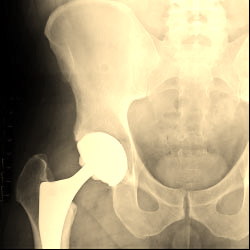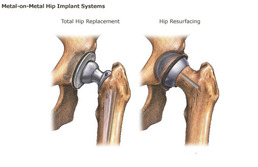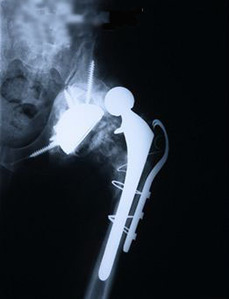
A study by Cecelia Tiemann shows that more than one million skeletal fractures occur annually in the U.S. About 300,000 of these are hip fractures that may lead to hip pains which may trigger patients to undergo hip implant surgery such as Depuy pinnacle hip implant. Johnson & Johnson’s third quarter earnings report states about up to 560 DePuy pinnacle lawsuits have landed in courts for litigation.
Hip implant surgery is defined by MedlinePlus as a hip implant surgery solution for people with severe hip damage. During hip implant surgery, the surgeon pulls out the damaged cartilage and bone from the patient’s hip joint and positions into place new, man-made parts. The surgery takes away the hip pains, revitalizes the patient’s hip joint to work well and increases the capacity to support mobility.
An estimated number of hip fractures will continue to rise worldwide from 1.7 million in 1990 to 6.3 million by 2050, according to World Health Organization. Moreover, what most people once thought were the answers to treating and/or preventing osteoporosis have been out in the open.
The causes of osteoporosis may develop from previous history of fracture after age 50, decrease in bone mass, post-menopause, small frame and thin, family history of osteoporosis, vitamin D deficiency, low calcium intake, inactive lifestyle, cigarette smoking, use of certain medications, low testosterone in men and overuse of alcohol and caffeine, Tiemann says in her research.
To prevent a person from developing osteoporosis, three ways were being highly recommended. First is to maintain balanced meals, including fats, carbohydrates and proteins along with calcium and vitamin D supplementation. Doing exercise comes next in the list which is considered as a very effective way of stopping and even reversing osteoporosis. Third and last is sunlight in safe doses which has also been shown to benefit bone health from the synthesis of vitamin D in the skin.
The eHow health website also mentions three effective exercises that can avoid a person from getting osteoporosis these are the strength training which includes extensions, squats and bicep curls. Doing a variation of exercises that may encourage well-balanced muscle development and enhances coordination and balance. Strength training exercises protect the bones against osteoporosis and help maintain a healthy skeletal system and an active lifestyle. Second on the list is the aerobic exercise which is beneficial for the hearth and the over-all fitness. Osteoporosis symptoms can be prevented through this process. Last on the list is the is the flexibility exercises which helps prevent osteoporosis by moving the joints over a chock-full choice of motion.
The good news is that with the natural methods of handling bone injury mentioned above, men and women can take more accountability for their bone condition and look headlong to a healthier quality of being. The DePuy Pinnacle Lawsuit can be avoided by patients who are having independent living free from the risk of having an artificial hip joints through a hip implant surgery.
URL REFERENCES:
nlm.nih.gov/medlineplus/hipreplacement.html
ezinearticles.com/?expert=Cecelia_Tiemann
ehow.com/way_5616642_exercises-reverse-osteoporosis.html
Hip implant surgery is defined by MedlinePlus as a hip implant surgery solution for people with severe hip damage. During hip implant surgery, the surgeon pulls out the damaged cartilage and bone from the patient’s hip joint and positions into place new, man-made parts. The surgery takes away the hip pains, revitalizes the patient’s hip joint to work well and increases the capacity to support mobility.
An estimated number of hip fractures will continue to rise worldwide from 1.7 million in 1990 to 6.3 million by 2050, according to World Health Organization. Moreover, what most people once thought were the answers to treating and/or preventing osteoporosis have been out in the open.
The causes of osteoporosis may develop from previous history of fracture after age 50, decrease in bone mass, post-menopause, small frame and thin, family history of osteoporosis, vitamin D deficiency, low calcium intake, inactive lifestyle, cigarette smoking, use of certain medications, low testosterone in men and overuse of alcohol and caffeine, Tiemann says in her research.
To prevent a person from developing osteoporosis, three ways were being highly recommended. First is to maintain balanced meals, including fats, carbohydrates and proteins along with calcium and vitamin D supplementation. Doing exercise comes next in the list which is considered as a very effective way of stopping and even reversing osteoporosis. Third and last is sunlight in safe doses which has also been shown to benefit bone health from the synthesis of vitamin D in the skin.
The eHow health website also mentions three effective exercises that can avoid a person from getting osteoporosis these are the strength training which includes extensions, squats and bicep curls. Doing a variation of exercises that may encourage well-balanced muscle development and enhances coordination and balance. Strength training exercises protect the bones against osteoporosis and help maintain a healthy skeletal system and an active lifestyle. Second on the list is the aerobic exercise which is beneficial for the hearth and the over-all fitness. Osteoporosis symptoms can be prevented through this process. Last on the list is the is the flexibility exercises which helps prevent osteoporosis by moving the joints over a chock-full choice of motion.
The good news is that with the natural methods of handling bone injury mentioned above, men and women can take more accountability for their bone condition and look headlong to a healthier quality of being. The DePuy Pinnacle Lawsuit can be avoided by patients who are having independent living free from the risk of having an artificial hip joints through a hip implant surgery.
URL REFERENCES:
nlm.nih.gov/medlineplus/hipreplacement.html
ezinearticles.com/?expert=Cecelia_Tiemann
ehow.com/way_5616642_exercises-reverse-osteoporosis.html



 RSS Feed
RSS Feed